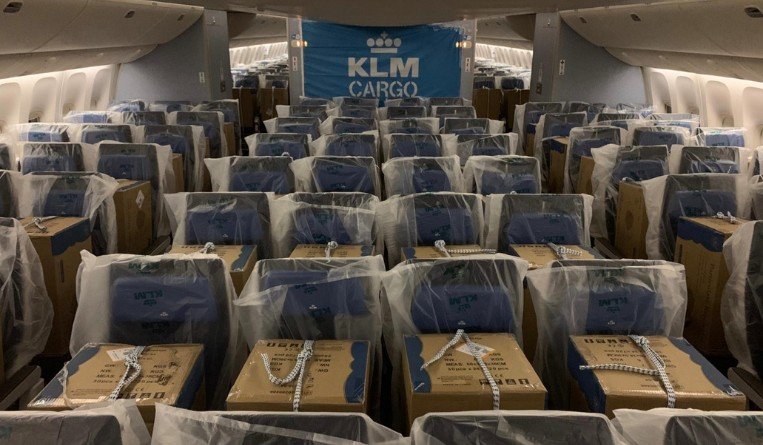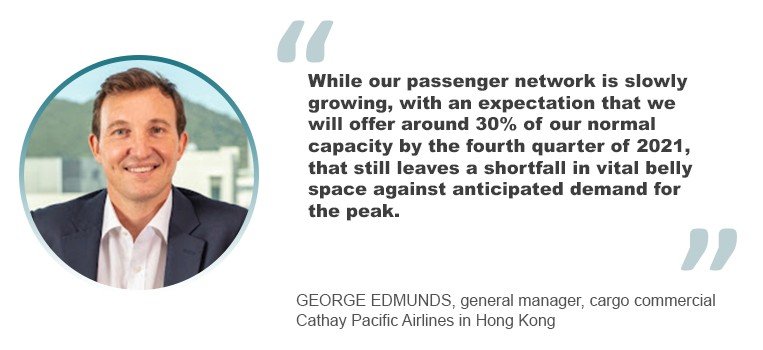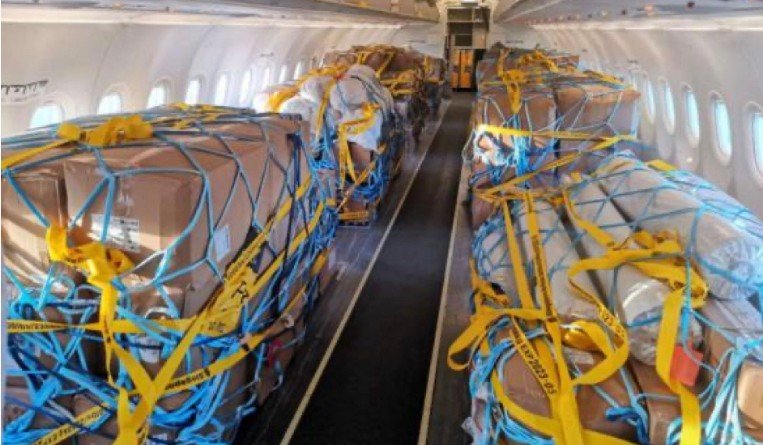On August 2, Cathay Pacific resumed cargo flights to Pittsburgh International Airport. The twice-weekly flights originate in Hanoi and go nonstop from the carrier’s Hong Kong base to the US airport.
The operation, which is carrying garments for forwarder Unique Logistics, does not use one of Cathay’s Boeing 747 freighters. Instead, the airline is fielding 777-300ER passenger aircraft that have been converted for cargo.
In the present market conditions, Cathay’s management sees an important role for converted passenger aircraft to supplement its freighter fleet. It has decided to increase their use in the peak season.
“While our passenger network is slowly growing, with an expectation that we will offer around 30% of our normal capacity by the fourth quarter of 2021, that still leaves a shortfall in vital belly space against anticipated demand for the peak,” said George Edmunds, general manager cargo commercial.
“We are addressing these capacity concerns by converting two more of our Boeing 777 passenger aircraft into cargo-only freighters, by removing seats from the Economy Class cabins. These additional aircraft will support our post and general cargo shipments around the Asian region,” he continued.
According to aviation intelligence and consulting firm IBA, freighter utilization has gone through the roof. It registered 138,000 freighter flights a month last December, up from 78,000 flights before the pandemic and 30,000 more than in December 2019.
However, this has not been enough to match demand. Airfreight capacity still has not recovered from the impact of the pandemic. The International Air Transport Association reported that in June it was 10.8% below the level in June 2019. The continuing high demand for lift is straining operators, pushing up rates and pricing some traffic out of the market.
The US Federal Aviation Administration has come to the same conclusion about the need for incremental airfreight capacity. The exemption it had issued to allow passenger aircraft to carry cargo in the cabin, which was due to expire on July 10, was extended until December 31.
The authorization for European airlines to move cargo in passenger cabins also runs until December 31.
While airlines continue to show an appetite for ‘preighters,’ their enthusiasm is not shared by ground handlers and airports. There have been allegations that some in Europe refused to accommodate these aircraft, as the loading and unloading through the passenger door is time-consuming and cumbersome and requires larger work crews, which is challenging at a time of labour shortage.
Some airports seem to be coping better with preighters than others. Rickenbacker International airport has developed a portable roller system to speed up the loading of such aircraft. For Cathay and Unique Logistics, Pittsburgh’s ability to quickly unload cargo and get it on trucks for delivery was one of the reasons why they chose to use the airport.
Some passenger carriers, such as Delta Air Lines, have opted to use widebody planes to carry cargo without using the cabin. Robert Walpole, vice president for cargo at Delta, described its strategy as “cargo-led.” It has deployed aircraft on a number of routes to carry cargo in the first place but welcomes passengers as additional revenue.
Others, such as United Airlines and Air Canada, which were early protagonists of the use of passenger widebodies to carry cargo, are set to continue with these operations until the end of the year, although they will reduce the number of planes used for this purpose as passenger service ramps up further.
Carriers from the Asia-Pacific region appear to have the strongest appetite for passenger widebodies in cargo service. Airlines from South Korea, Vietnam, Malaysia and New Zealand have all used preighters.
Korean Air has operated over 10,000 cargo-only passenger flights since March 2020 and currently runs some 800 preighters a month. The operation has covered 65 routes and moved some 400,000 tonnes.

To a large extent the cabins – with or without seats removed – have been used primarily to carry pandemic relief goods, but the flights have also come into play to deal with capacity challenges for the airline’s clientele. Management expects these flights to play a heightened role during the peak season, given the usual rise in demand at this time.

Ian Putzger



